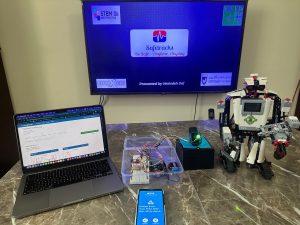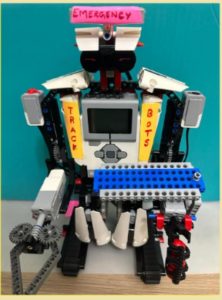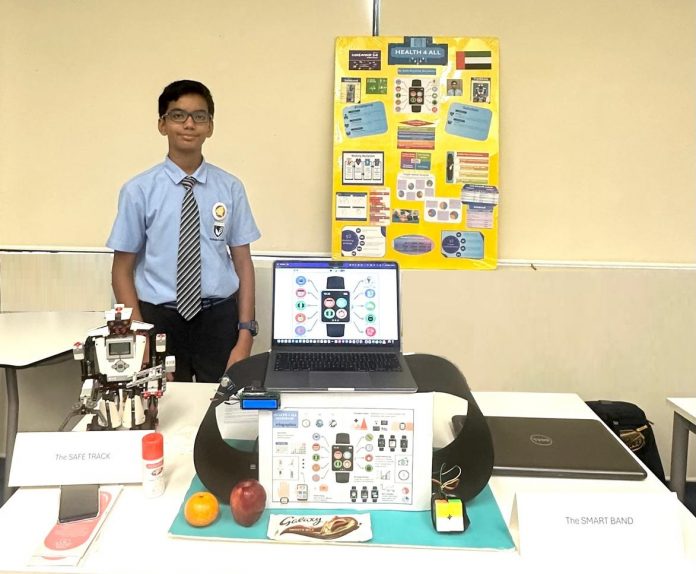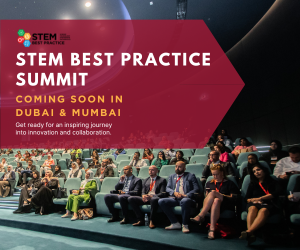1. Project Description and Impact:
In my innovative project The Safetracks, I have worked on what I believe can make a significant impact on people’s health and wellbeing. This project comprises two key components: the SafeBand and the TrackBot.


The SafeBand is a wristband equipped with multiple sensors, including a pulse sensor, temperature sensor, air quality sensor, and more. It monitors the wearer’s general health and sends alerts to a registered phone number and local authorities in case of emergencies, such as abnormal sensor readings. The data is recorded on an online portal for easy access and analysis.
The TrackBot is an automated robot deployed during emergencies to provide immediate first aid assistance to the individual.
My project’s primary target audience is elderly citizens, who are more susceptible to health emergencies. By addressing delays in healthcare response times, SafeTracks aims to save lives and enhance overall well-being.
2. Inspiration and Development Process:
 The idea for SafeTracks was inspired by the significant number of casualties caused by delays in healthcare services. Recognizing this pressing issue motivated me to create a solution that could address this challenge effectively.
The idea for SafeTracks was inspired by the significant number of casualties caused by delays in healthcare services. Recognizing this pressing issue motivated me to create a solution that could address this challenge effectively.
To bring this project to life, I followed the Stanford Design Thinking Process, which involves five key steps:
Empathize: I engaged with affected individuals to understand their concerns and needs.
Define: I developed a clear problem statement to guide my project.
Ideate: I brainstormed various solutions and selected the most viable one.
Prototype: I created a working model of SafeTracks.
Test: I rigorously tested the prototype to ensure it functioned as intended.
These 5 steps helped me to analyse, find solution and aided as the basic guidelines in development of my project.
3. Incorporating Feedback:
Throughout the development process, I actively sought feedback from classmates, teachers, and industry experts. Their insights were invaluable in refining the project.For instance:
A peer suggested adding an audible alert to notify people nearby during emergencies. In response, I integrated a loud alarm into the SafeBand.
An industry expert recommended including geolocation tracking to help emergency responders locate the individual quickly. To address this, I added a GPS module to the SafeBand, enabling it to send the wearer’s location during critical incidents.
By incorporating feedback, I significantly improved the functionality and usability of SafeTracks.
4. Challenges and Solutions:
Developing SafeTracks came with its fair share of challenges, each requiring persistence and creativity to overcome:
Data Integration: Connecting the SafeBand’s sensor data to an online database for real-time monitoring was complex. To address this, I:
Learned about servers and database management.
Experimented with different data modules compatible with Arduino.
Used tools like ThingSpeak and IFTTT to automate the data transfer process.
Durability: Since the SafeBand is intended for elderly individuals, it needs to be robust and easy to use. I addressed this by:
Selecting lightweight yet durable materials for the casing.
Designing an intuitive interface for simple operation, even for users with limited technical experience.
By tackling these challenges head-on, I ensured SafeTracks met the intended standards of reliability, functionality, and usability.
5. Preparation for Future Studies and Careers: This project has been instrumental in preparing me for a future in STEM. Through SafeTracks and similar initiatives, I’ve developed critical skills such as:
Problem-Solving: Tackling real-world challenges affecting thousands of people.
Innovation: Thinking creatively to design impactful solutions.
Collaboration: Working with peers, mentors, and experts to refine ideas.
Communication: Articulating my vision and progress effectively.
These experiences have fueled my passion for STEM and equipped me with the tools to make meaningful contributions in my academic and professional journey.
About the Author
 Mohnish Sai is currently enrolled in Grade 7 at Gems Modern Academy, Dubai. Demonstrating remarkable dedication to his studies, he is recognized as a diligent student, displaying a passion for learning and a penchant for academic excellence. His outstanding performance has earned him prestigious accolades such as the General Proficiency and Azeem Scholar Awards.
Mohnish Sai is currently enrolled in Grade 7 at Gems Modern Academy, Dubai. Demonstrating remarkable dedication to his studies, he is recognized as a diligent student, displaying a passion for learning and a penchant for academic excellence. His outstanding performance has earned him prestigious accolades such as the General Proficiency and Azeem Scholar Awards.
His enthusiasm for knowledge extends to the realm of STEM, where he is deeply intrigued by its potential to address intricate societal challenges and foster innovative solutions.
Mohnish’s achievement and accolades include, but are not limited to, his triumph as the Winner of the GMA’s CBL Mega Finals, attainment of the Silver Award at the Gems Innovation Challenge, recognition as a recipient of the Young Achievers Award by Edpark Tech, he has also excelled internationally, winning “AWS Out of the Box” & Design Awards at events such as Codevour 5.0, FLL & WRO Competitions.
He is also UAE’s Rank 1 holder with gold medals in Mathematics, Science, and English Olympiads. Mohnish’s talents extend beyond academics, with notable achievements in Chess, Kenken, and Rubik’s Cube solving, earning him recognition in diverse fields.




